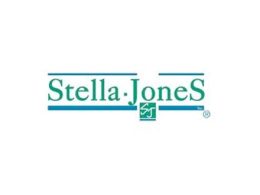by Kristina Hooper, Chief Global Market Strategist, Invesco
Key takeaways
|
The market’s mood has improved Positive data in the U.S., Europe, and China helped improve the global market mood after a rough month. |
Where do we go from here? The banking mini-crisis may put an end to rate hikes sooner rather than later and prevent central bankers from overtightening. |
Central banks may diverge. It seems the European Central Bank may be more hawkish than the U.S. Federal Reserve (Fed) going forward. |
This year, the term has taken on greater meaning given the madness we saw in markets throughout March. Banking issues appeared early in the month and worsened from there. An extreme “risk-off” environment ensued as classic bank runs occurred in the United States and some bank stress appeared in Europe. We argued these problems were bank-specific and not systemic, and we were confident that policymakers were very sensitive to the risks created by aggressive tightening and were acting quickly and effectively to stem problems.
The market’s mood has improved
As April begins, it appears the issues may have ended, at least for now. The mood in markets continued to improve last week as the VIX fell below 20, credit default swap spreads narrowed somewhat, yields rose for the most part, and stocks rose.1 The banking sector appeared to stabilize with issues at least temporarily abating. That meant a modest unwinding of the risk-off environment as attention returned to economic data, which has been mostly positive for the mood in markets.
Signs point to material improvement in inflation and inflation expectations in the U.S.:
- The February core Personal Consumption Expenditures (PCE) price index increased 0.30% month-over-month in February, which was slightly lower than consensus expectations.2
- What’s more, U.S. PCE core services ex-housing was only up 0.27% in February (3.3% annualized).2 This is very important — this is the category of inflation that U.S. Federal Reserve (Fed) Chair Jay Powell is most concerned about because it has been the stickiest.
- The final reading of the March Michigan Survey of Consumers showed a continued drop in consumers’ inflation expectations for one year ahead. Back in October 2022, one-year ahead inflation expectations were 5%; five months later, they are at 3.6%.3
In the euro area, recently released data showed headline inflation dropped significantly in February, helped largely of course by the drop in energy prices.4 Unfortunately, euro area core inflation actually accelerated,4 which is disappointing but not surprising given that the European Central Bank (ECB) started tightening later than the Fed.
The global market mood was also supported by some positive data from China. China’s official services Purchasing Mangers’ Index (PMI) reading was very strong at 58.2.5 This was the highest reading since 2011, and it supports my thesis that China should experience a strong reopening this year as “revenge living” takes hold after the easing of COVID restrictions. In addition, we saw that China‘s property market has made a solid rebound not only in terms of investment but also in terms of prices.6 These developments should be positive beyond China, especially for Asia.
Where do we go from here?
In the last several weeks, I’ve come to the conclusion that the banking mini-crisis may turn out to be a blessing in disguise, ending rate hikes sooner rather than later and preventing central bankers from overtightening and sending economies into a broad recession. I am still optimistic that may be the case, although I must admit that I’m sensing some eagerness by central bankers to return to their pre-March mindset, when it was all about combating inflation.
That may mean one more rate hike for the Fed, given the recent moderation of inflation and inflation expectations. However, it could mean a greater level of tightening for the ECB. Yes, core inflation is usually tethered to headline inflation with a lag, and so I would expect it to ultimately follow headline inflation down. But it seems the ECB may be more hawkish than the Fed going forward.
Everything in moderation?
As a mom, one of my favorite pearls of wisdom to my children is “everything in moderation.” That applies to post-Halloween candy consumption for them, screen time for them, buffets for my husband, and basketball mom “ladies’ nights out” for me. And it also applies to the current economic environment.
We don’t want markets getting ahead of themselves, becoming so “risk on” that financial conditions ease and convince central banks they need to do more tightening than otherwise would be the case. And we don’t want the banking crisis to tighten credit conditions so much that it sends the economy into a serious recession; however, I don’t think most market participants would mind credit conditions tightening just enough to convince central bankers to ease off of the interest rate hikes.
Similarly, most market participants wouldn’t mind seeing some signs of a weakening U.S. consumer, as indicated in recent personal spending data, or easing in labour market conditions to take pressure off core inflation, but they don’t want to see a very weak U.S. consumer or mass layoffs that send the economy into a deep recession.
In other words, the ideal would be a “Goldilocks” environment — not too hot and not too cold. Unfortunately, that requires delicate calibration with a surgical tool, not the blunt instrument that is monetary policy. And OPEC+ has thrown a wrench into things (or as my UK colleagues would say, a spanner into the works) with its surprise decision to limit oil output, which has driven up the price of oil in the past day.
That’s a long-winded way of saying that the path to a semi-soft landing for the economy is narrow, but it does exist – and central bankers might get there in spite of themselves. However, it gives me pause when I hear news of layoffs at many companies.
What’s ahead?
Despite increasing “risk on” sentiment recently, I believe being well diversified and defensively positioned makes sense in this environment. Sentiment can quickly change, as we have seen countless times before. And there remains significant uncertainty. Fixed income is offering substantial yields after years of anemic yields; investment grade bonds look especially attractive and can be an important component of portfolios, in my view.
Within the equity space, I anticipate secular growth and defensive sectors such as technology, health care, and utilities may perform better. While I am generally cautious, I also believe there are selective opportunities in emerging market assets, especially Asia emerging markets given the China reopening.
Looking ahead, I’ll be paying close attention to Caixin services Purchasing Managers’ Index (PMI) for further confirmation of the robust China re-opening, as well as final S&P Global PMIs for the U.S., UK and the euro area. Also, the U.S. jobs report will be released this week — the most important data point in this report for me is wage growth. Wishing the economy and markets a good — but not too good — week.
With contributions from Tomo Kinoshita, Paul Jackson, and Arnab Das
Footnotes:
1 Source, Bloomberg, L.P., as of March 31, 2023
2 Source: U.S. Bureau of Labor Statistics, as of March 31, 2023
3 Source: University of Michigan Survey of Consumers, as of March 31, 2023
4 Source: Eurostat, as of March 31, 2023. The euro area consists of Belgium, Germany, Estonia, Ireland, Greece, Spain, France, Croatia, Italy, Cyprus, Latvia, Lithuania, Luxembourg, Malta, the Netherlands, Austria, Portugal, Slovenia, Slovakia and Finland.
5 Source: National Bureau of Statistics, as of March 31, 2023
6 Source: Invesco from CEIC, as of March 24, 2023
Copyright © Invesco















